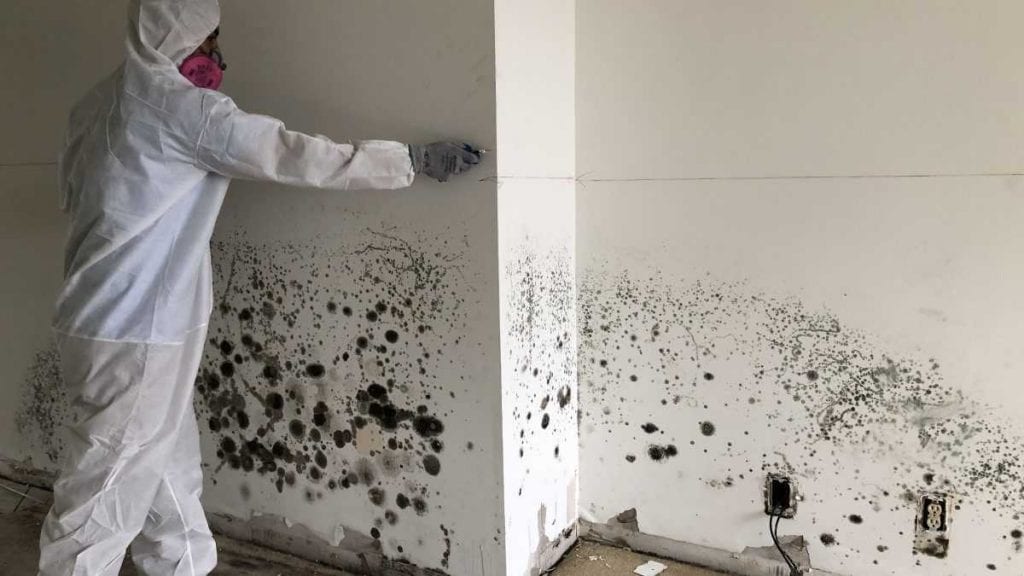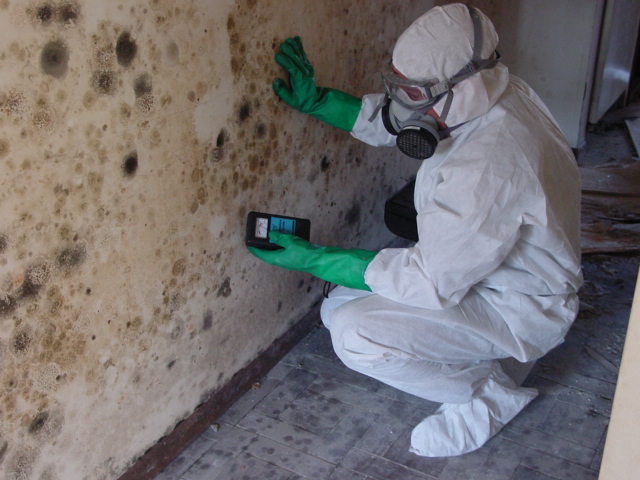What causes mold?
Mold shapes like a microscopic organism that requires the following to grow:
- Any organic material (for example, wood or paper)
- Oxygen
- Moisture
Usually destroys whatever it grows on as it gradually digests it. Mold also releases tiny spores that can travel through the air; these spores often mycotoxins and allergens attached to them. It is the mycotoxins and allergens that can affect our health and cause allergic reactions.
If your home is suffering with black or any other type of mold you want the best mold treatment and a quick and effective solution. You should always seek specialist advice and trust an experienced professional.
Treating Mold
Protect yourself from mold spores by wearing goggles, long rubber gloves and a mask that covers your nose and mouth. Open the windows but keep doors closed to prevent spores spreading to other areas of the house.
- have a plastic bag ready to take away any soft furnishings, clothes and soft toys that are moldy. Soft furnishings should shampooed and clothes professionally dry cleaned
- fill a bucket with water and some mild detergent, such as washing-up liquid or a soap used for hand-washing clothes
- use a rag dipped in the soapy water to carefully wipe the mold off the wall. Be careful not to brush it, as this can release mold spores
- when you’ve finished, use a dry rag to remove the moisture from the wall
- afterwards, put the rags in a plastic bag and throw them away
- all the surfaces in the room should be thoroughly cleaned by either wet wiping or vacuuming to remove any spores

Mold Prevention Tips
- Check to see if your windows are allowing rain to seep in and if the sealant around them is damaged.
- Always make sure that you dry wet areas immediately. Wipe up spillages and make sure to dry floors and walls after you take a bath or shower.
- A good way to monitor humidity in your home is through a moisture meter, which can be bought from most good DIY stores. Ideally, humidity should be between 30 and 60 percent.
- Leaks are commonly caused by broken gutters or drainpipes. Make sure to inspect the exterior of your house regularly.
- Finally, it is important to let air circulate through your home. Keep internal doors open as much as possible and move the furniture away from walls. Open windows on dry days to let fresh air blow into your home, which will reduce moisture and therefore help to prevent mold.
Condensation Damp
Condensation damp occurs as a direct result of poor or inadequate ventilation, and once the ventilation issue has been remedied, the condensation and mold should no longer appear. The usual first signs of condensation appear around the window frames as the excess moisture in the property is trying to escape.
Dampness and mold are often found together but different form of damp can be a lot more severe than mold. Rising damp for example, will most probably need professional removal


